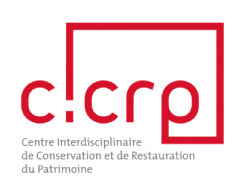Identification of paints for domestic and industrial application used by Picasso and his contemporaries
Programme start: 2009
CICRP: Alain Colombini (director), Norbert Bernstein, Emilie Hubert
Partnership(s): Art Institute of Chicago (AIC), Musée Picasso of Antibes, Interdisciplinary Nanoscience Centre of Marseille
This research programme on the identification of paints of domestic and industrial application used by Picasso and his contemporaries has essentially concerned works belonging to the Musée Picasso of Antibes.
It includes the scientific imaging carried out on the entirety of the Musée Picasso of Antibes’ collection of paintings on canvas, wood, fibrocement and paper support, a documentary research initiative relating to the formulations of paints used in the first half of the 20th century, the use of these paints by Picasso and his contemporaries, the analysis of a few standard Ripolin samples and painted works of the first half of the 20th century.

Colour chart of Ripolin paints.
During this programme, a Charisma application was carried out in 2010 by the CICRP in liaison with the Art Institute of Chicago (AIC), the Musée Picasso of Antibes and MOLAB (University of Perugia, Italy). It concerns the HOPPA Project (House Paints of Picasso in Antibes), which has drawn on the complementarity of investigations led under the Picasso/Ripolin programme. This project has primarily focused on the analysis of samples by non-invasive analytical techniques such as near- and mid-infrared spectroscopy and UV-visible spectroscopy. The first outcome of this study confirms the possibility of distinguishing, with the use of the portable analytical techniques applied, between industrial paints (thought to be Ripolin in the present case) and artists’ paints.
A significant part of this programme was concluded in May 2011 with the From Can to Canvas symposium.


